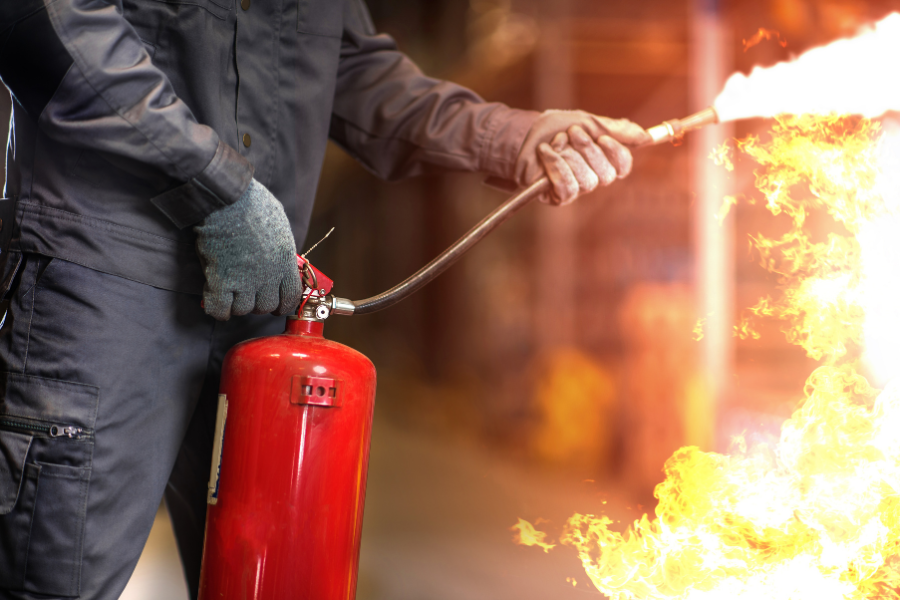
Overall, e-scrap, scrap metal, C&D debris, rubber and organics recycling facilities reported 373 fires, down 4% year over year. | Piotr Zajda/Shutterstock
An annual report from recycling industry fire protection firm Fire Rover found that publicly reported MRF and transfer station fires in the U.S. and Canada dropped by 9% in 2023 compared to the prior year.
The company on March 11 released the seventh edition of the report, prepared by Fire Rover’s vice president of fire protection services, Ryan Fogelman. In the report, Fogelman tallied 187 “waste, paper and plastic recycling” fires, a category that covers MRFs and transfer stations, down from 205 such fires in 2022. This contributed substantially to an overall industry decrease, because these facilities report 50% of all fires.
Across all recycling facility types – including e-scrap, scrap metal, C&D debris, rubber and organics – facilities reported 373 fires, down 4% year over year.
The report is based entirely on news reports of fires at recycling facilities, meaning it only counts the larger fires that made it to the point of media coverage. Fogelman performs an internet search for various keywords, such as “MRF” and “fire,” to come up with the results. By nature, that means the report is looking at only a portion of the fires.
“I believe these are about six times small,” Fogelman said of the numbers during a March 12 webinar outlining the results. He said he tries to be conservative with the figures, because the goal isn’t to scare people but simply to use some type of data for a yearly comparison. “What I’m trying to do is create a number.”
Facilities handling metal components didn’t see the same significant decrease as MRFs and transfer stations. Metals recycling facilities reported 116 fires, up from 112. And electronics recycling facilities reported nine fires in 2023, up from five in 2022.
Organics processors saw a slight decrease from 30 fires in 2022, down to 27 fires in 2023.
Factors behind the drop
The report narrows in on 2018 as a year of reckoning for the recycling industry and the widespread threat of fires. That was the year the industry realized “we’re now dealing with a monster,” Fogelman said.
The monster was lithium-ion batteries, and it added onto the traditional recycling facility fire threats of propane tanks, chemicals and such.
Indeed, it was in the spring of 2018 that a MRF operator offered an aside, during a discussion focused on commodity markets, sounding the alarm that lithium-ion battery fires present an “existential threat” for the recycling industry.
In the years since 2018, Fogelman noted there have been coordinated education campaigns, a growing set of operational best practices and the adoption of fire prevention technologies such as Fire Rover. The latter has been installed at over 600 facilities globally.
“You put all those together, and we’re starting to see fires go down,” Fogelman said.
Still, he didn’t paint an entirely rosy picture. He pointed out that despite fires falling overall throughout the year, 2023 still had three months that set new records for that month since the annual report began. Those were February, May and July.
And even the 2023 full-year figure, while lower than the prior year, is the second highest year on record. It’s higher than 2018, the year the battery fires became such an area of focus.
“I’m clearly not saying that we have the solution solidified and fixed,” Fogelman said. “But the reality is we’re making progress.”

